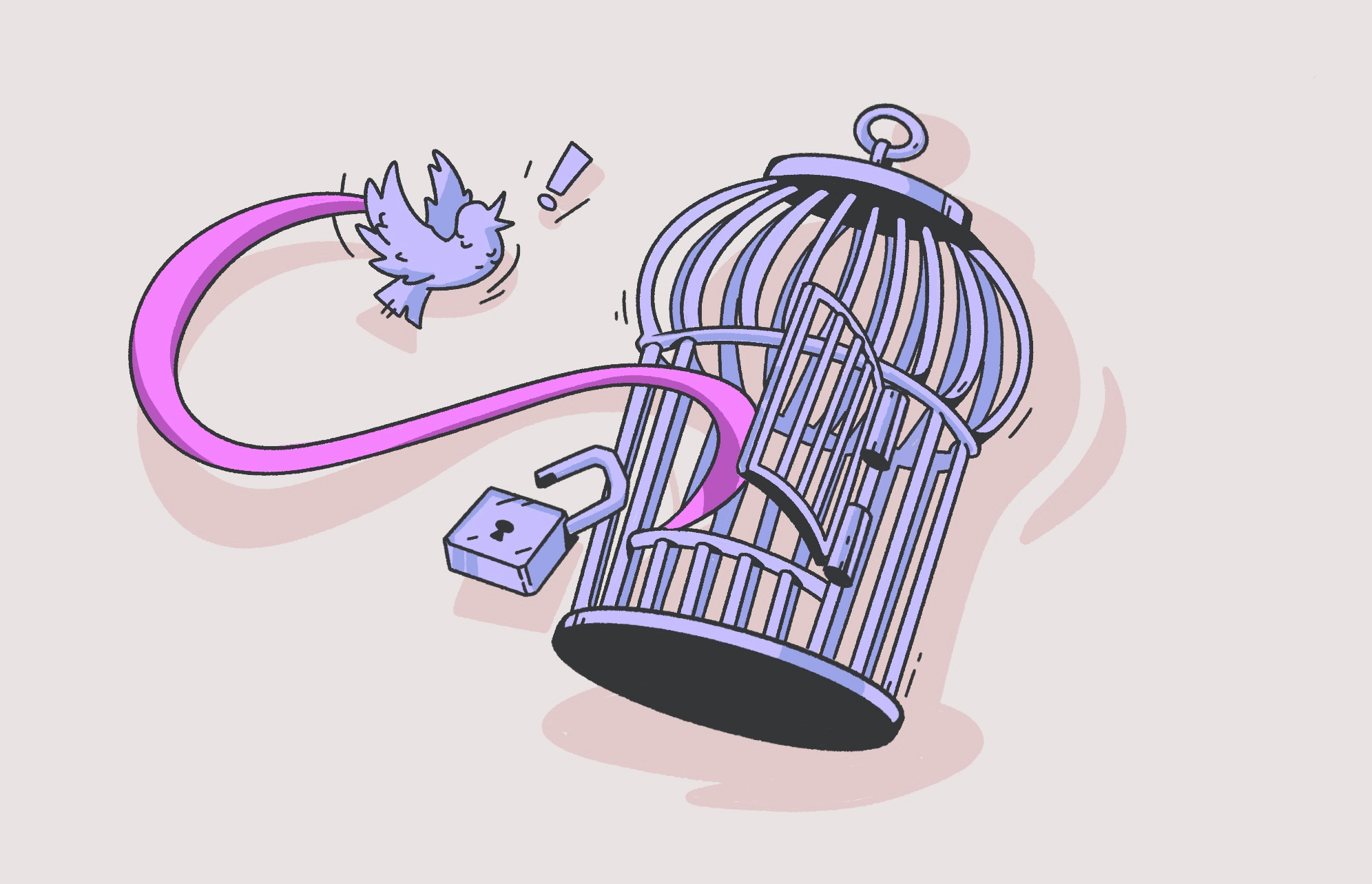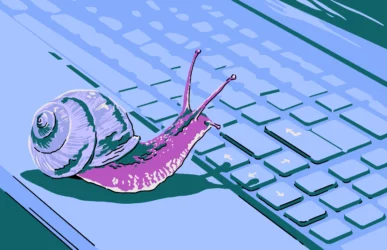X, formerly Twitter, owned by billionaire Elon Musk, is one of the most popular social media platforms on the planet. But because of its popularity and notoriety, Twitter (X) is also a prime target for hackers. So, what happens if your Twitter is hacked?
Use this guide to learn how hackers can gain access to your X account, signs that a Twitter account is hacked, and what to do about it. Plus, we’ll cover how to stay safe in the future.
How can a hacker gain access to my Twitter account?
Cybercriminals are finding ever more creative ways to break into accounts, steal information, and commit fraud. Unfortunately, your account could be hacked in many ways, depending on your situation and the hacker.
Prevent account breaches with antivirus
Some of the more popular methods of gaining access to a Twitter account include the following:
- Phishing scams: Phishing scams are one of the most common tricks in the cybercriminal’s playbook. The attacker sends you an email that looks legitimate, claiming that your account has been hacked and you need to reset your password. You click the link to do so and are taken to a fake website designed to look authentic. You are then asked to enter your login credentials, but when you do, nothing happens. You have handed over the keys to your Twitter account to a total stranger.
- Weak passwords: There are dozens of ways hackers can gain access to an account with a weak password. If, for example, you use the names of kids or pets as passwords, criminals can often find this information through social media or public records.
- Personal information found on the dark web: Data breaches have resulted in millions of stolen records ending up on the dark web. Your information may be in one of these breaches. If a hacker finds it, they could use the info to break into your accounts.
- Man-in-the-middle attacks: Man-in-the-middle attacks occur when you log on to an unsecured network (public Wi-Fi at the coffee shop, for example) that a bad actor has breached. They wait until you log on, then target your device and install malware to take control.
- Malware: Dozens of malware variants are equipped to steal credentials or take control of accounts.
Signs that your Twitter account has been hacked
If your Twitter account has been hacked, you will know it soon enough. The most common scenario is to wake up one morning, see tons of unexplained activity on your account, and realize, “My Twitter got hacked!”
The following are some signs that could indicate your Twitter account is compromised.
Unauthorized tweets
If you see a bunch of tweets on your account that you didn’t post, it could indicate fraud. Pay close attention to what is posted; hackers usually include nefarious links to entice people to click so they can steal their info.
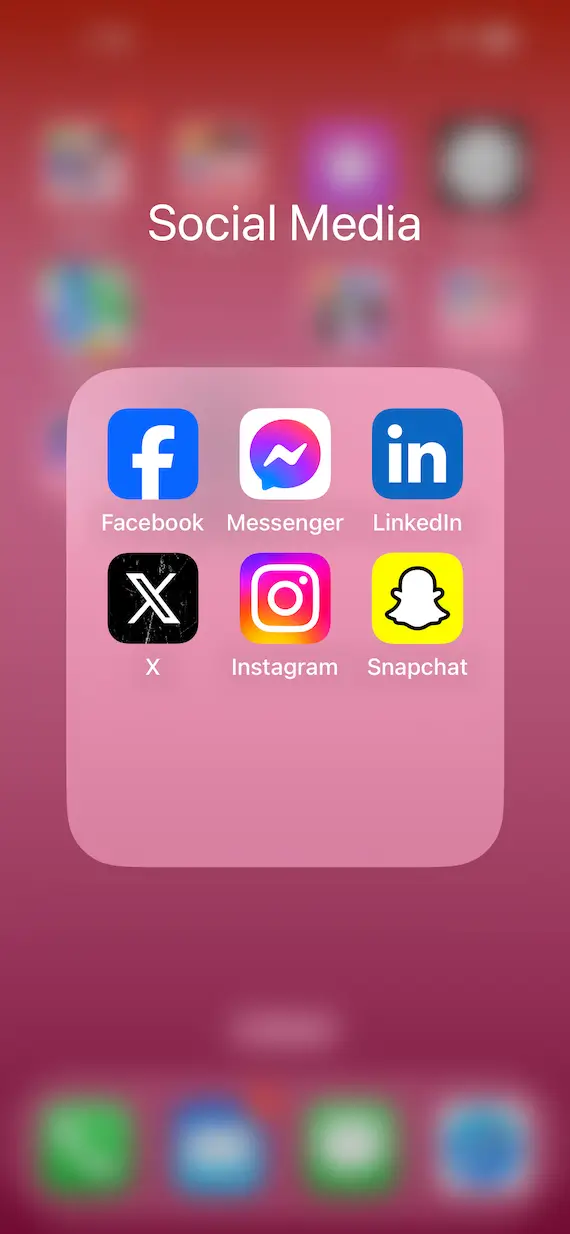

Strange activity
If you see multiple DMs in your account with responses you didn’t initiate, it could be a sign that something is wrong. If your account suddenly follows hundreds of new accounts, that, too, is a sign that a stranger is using your account.
You can check your account’s activity through the X app by utilizing the Apps and Sessions section. Here, you’ll see when and where recent activity has occurred. If you see activity from other countries, take it as a big red flag.
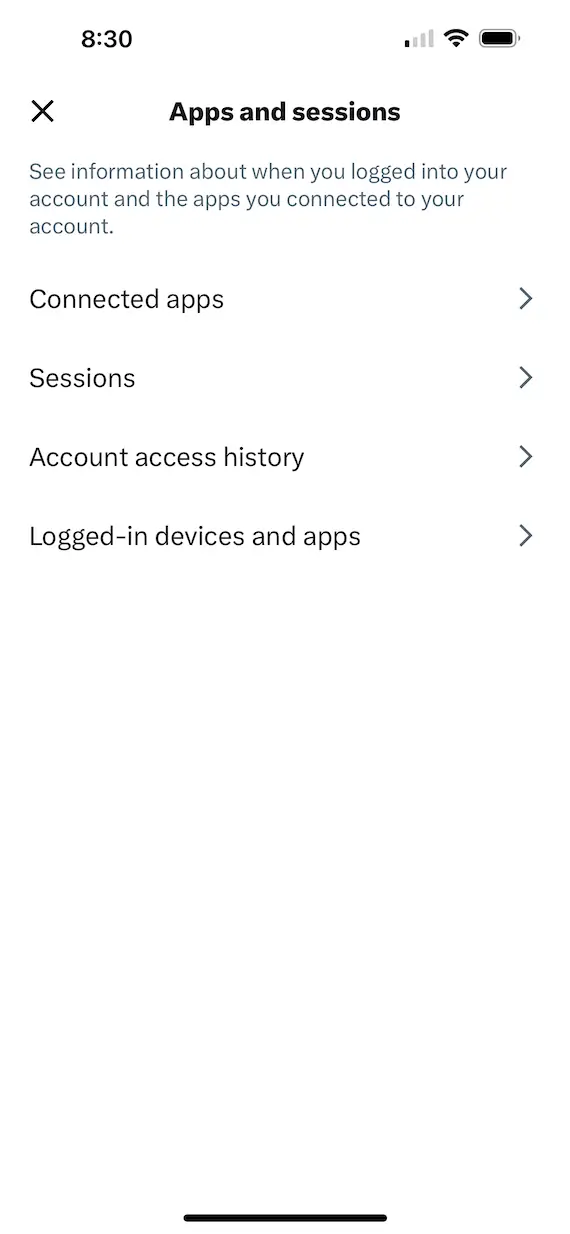
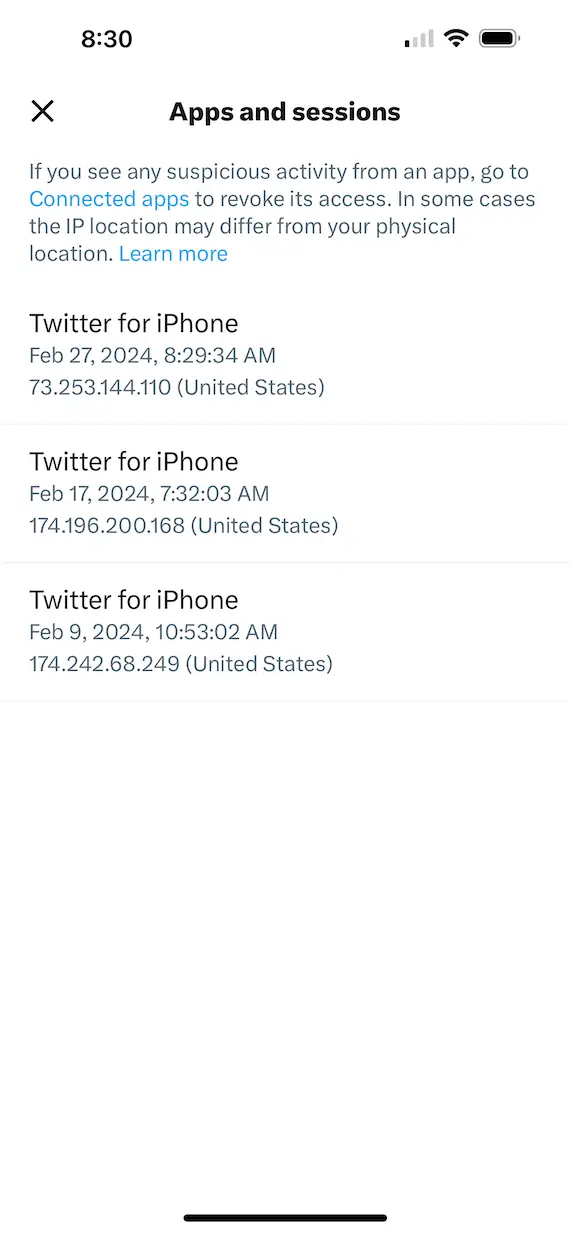
Unexpected notifications
Twitter’s built-in security sends notifications when someone fails to log in or changes important settings on your account. For example, you’ll receive notifications if you change your account password or fail a login attempt. If you start getting messages like this from Twitter but you didn’t change your account password or fail a login attempt, take action immediately.
What to do if your Twitter account is hacked
Finding out that your Twitter account is hacked is not the end of the world. That said, you will need to take quick action to fix the problem. Follow the steps below to restore access to your account and start fresh.
Reset your Twitter password
If you can still log in to your account and the hacker hasn’t changed the password, change your password. To do this:
- Open the X app.
- Tap the profile icon at the top left.
- Scroll down to “Settings and privacy.”
- Tap “Your account.”
- Tap “Change your password.”
- Enter your current password.
- Type in a new, long, strong password.
- Tap Done at the top right.
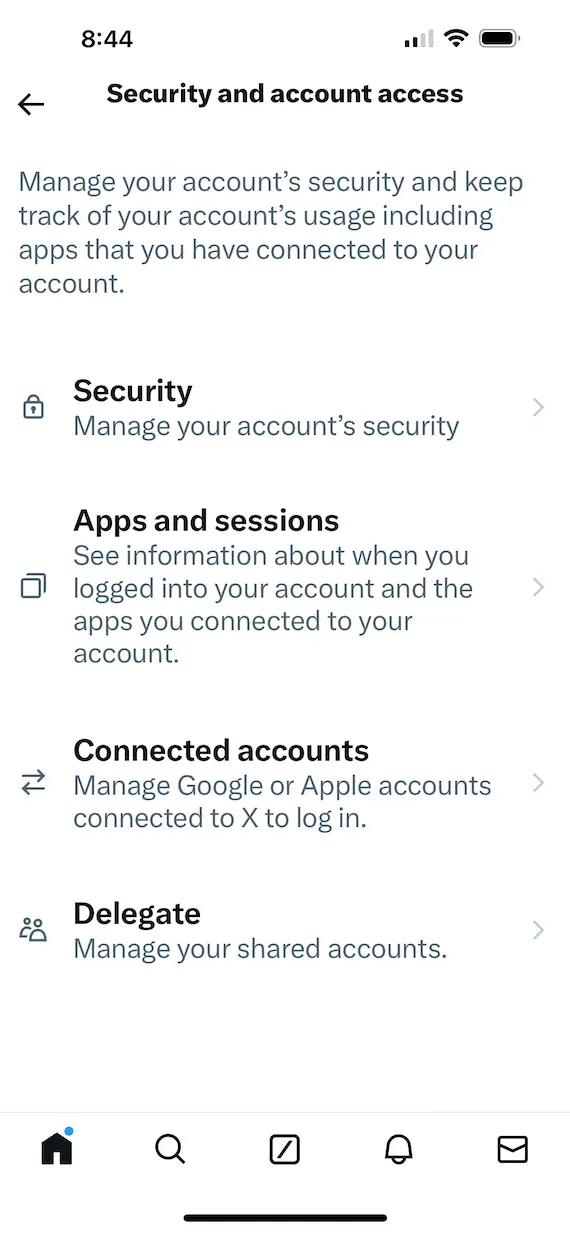
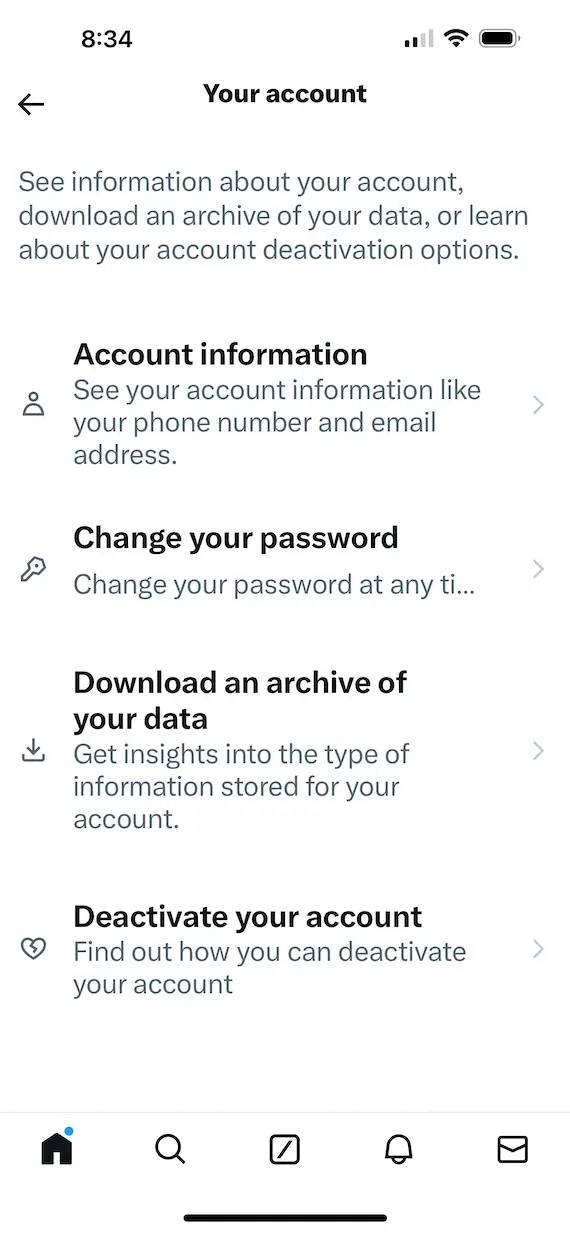
How to reset your Twitter password if locked out
If the hacker changed the password and locked you out of your account, you can still regain access:
- Open the X app.
- On the login screen, tap the “Forgot password?” link at the bottom left.
- Select email or phone for the confirmation code to reset your password.
- Enter the code.
- Change your password.
This method will work if the hacker hasn’t changed the email and phone numbers associated with the account. Fortunately, many hackers don’t bother to do this.
How to report a hacked Twitter account
If someone has hacked your Twitter account and the strategies listed above aren’t helping, visit the Twitter Help Center and follow the prompts on this page to recover the account and report the fraud.
How to recover a hacked Twitter account
To recover a hacked Twitter account, you must contact Twitter’s Help Center and follow their process. You will need to answer a few questions like, “Are you able to log into your X account?”
Preventive measures to safeguard your Twitter
Taking back control of your Twitter account is just step one. The next step is to formulate a plan going forward to keep your account safe in the future. It begins by making cybersecurity best practices part of your regular online routine. Here are a few tips.
Turn on 2FA
Turning on 2-factor authentication on your Twitter account makes it more difficult for hackers to change your password and lock you out. Choose from a text message, an authentication app, or a security key.
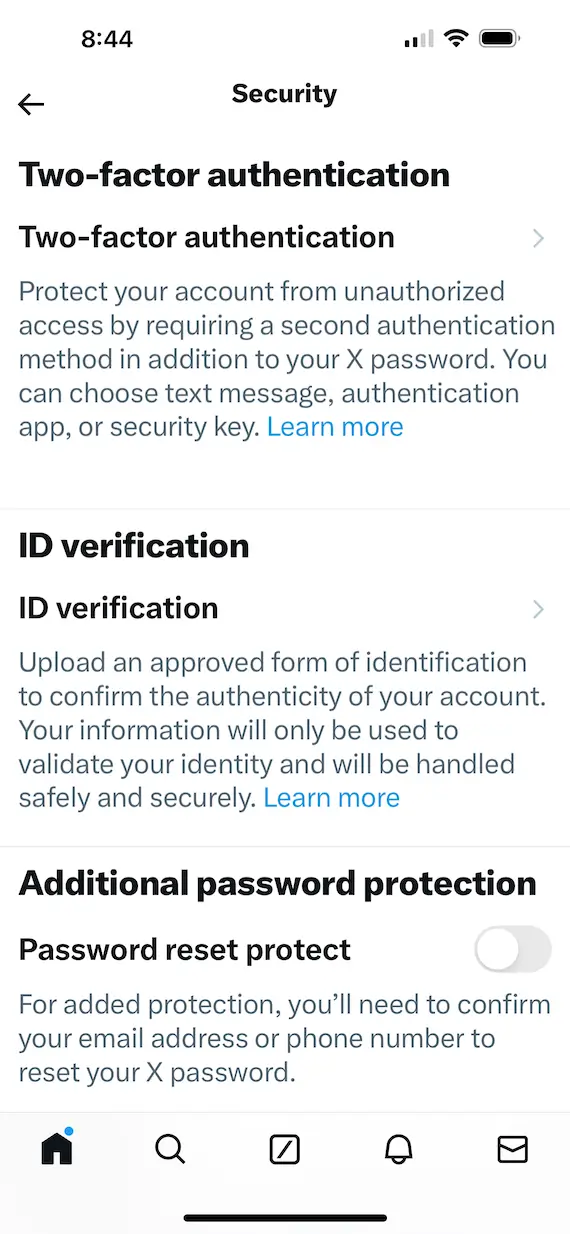
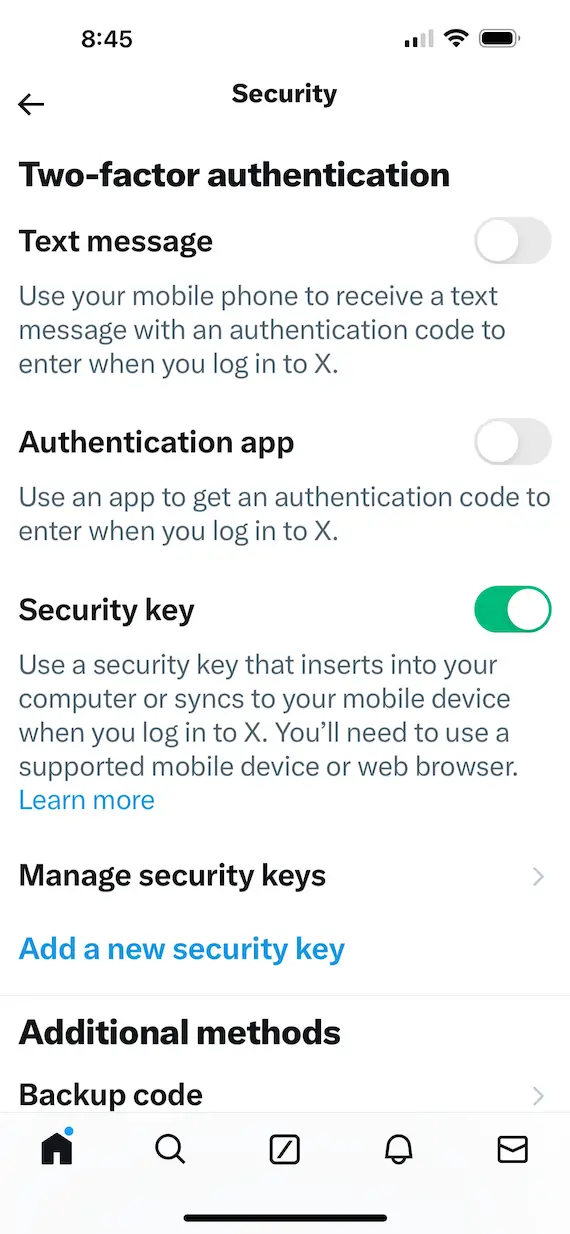
Bolster your password
Only use long, strong passwords made up of a combination of letters, numbers, and symbols. Never use dates or names or easily guessable passwords.
Never share credentials
Don’t share your login credentials with anyone, even someone you know. The cybersecurity practices of a friend or family member may not be as tight as your own.
Be wary of phishing emails
Never click on links in emails or SMS messages; you could put your information at risk. Above all, do not provide personal information or login credentials to anyone who asks for it unsolicited.
Keep control of your device
Lock your device with biometrics such as Face ID or Touch ID if possible, and never let it leave your sight. A bad actor only needs a few seconds to make critical changes.
Never download unsafe apps
Only download apps from verified platforms, never third-party locations. These apps could be laced with malware.
Overall, your best defense against hackers is common sense. If someone contacts you out of the blue asking for information, don’t give it. A bit of caution now can save you a lot of headaches later.
This is an independent publication, and it has not been authorized, sponsored, or otherwise approved by X Corp. X is a trademark of X Corp.
